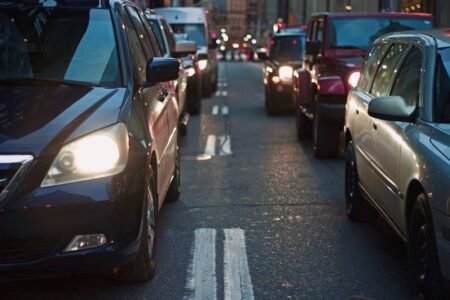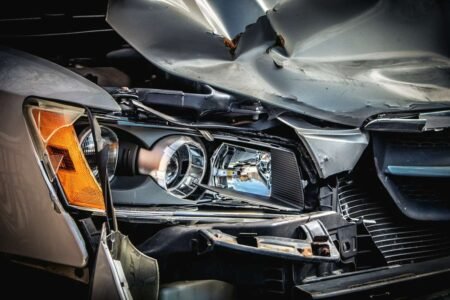The European Commission has proposed legislation to reduce the average CO 2 emissions of light commercial vehicles (vans) to 175 grams per kilometre. The proposal will be phased in from 2014 to 2016, and contains a long term emission reduction target of 135 g/km by 2020. The format of the proposed legislation is similar to the proposals on passenger cars agreed at the end of 2008. It is one of the last outstanding elements of the EU’s strategy to improve the fuel economy of light-duty vehicles which account for about 12% of the EU’s total carbon emissions. The proposal underlines the EU’s commitment to putting in place concrete measures to deliver on its greenhouse gas commitments in the run-up to the Copenhagen climate conference.
Advertisement
What is the problem?
Road transport is the second biggest source of greenhouse gas emissions in the EU, after power generation. It contributes about one-fifth of the EU’s total emissions of carbon dioxide (CO 2), the main greenhouse gas. Road transport is one of the few sectors where emissions are still rising rapidly, and the sector is currently undermining the EU’s efforts to tackle climate change. Light commercial vehicles make up about 12% of the light-duty vehicle fleet. Although there have been significant improvements over recent years in vehicle technology particularly in fuel efficiency, which translates into lower CO 2 emissions these have not been enough to neutralise the effect of increases in traffic and car size. Greenhouse gas emissions from transport have increased by 35.8% over the 1990-2006 period, and emissions from road transport have increased by 29.3%. This increase acted as a brake on the EU’s progress in cutting overall emissions of greenhouse gases, which fell by 9% in the EU-27.
What is the EU’s objective?
To help reduce greenhouse gas emissions and meet its Kyoto Protocol targets, the EU has agreed that average CO 2 emissions from light commercial vehicles should not exceed 175g CO 2 per km by 2016, phased in from 2014. They should then drop further to 135g/km by 2020. This approach follows similar legislation on the CO 2 emissions of passenger cars which came into force in April 2009 (Regulation (EC) No 443/2009). The target compares with an average emissions level of 203g CO 2 per km in 2007. Achieving this target will help Member States deliver the emissions reductions needed to respect the Kyoto protocol and its successor.
How will it work in practice
The draft legislation is aimed at reducing the average CO 2 emissions from new vans to 175 g/km by 2016, to be phased in from 2014, and to 135 g/km by 2020. Indicative emissions are established for each van according to its weight from an emissions limit curve in the draft Regulation. Each manufacturer has a target calculated as the average of the indicative emissions of all the vans for which it is responsible in a given year. A Manufacturer must ensure that from 2014 those vehicles registered in the EU for which it is responsible have average emissions that are below its target when 75% of their vehicles are taken into account. For the calendar year 2015, the percentage rises to 80% and from 2016, 100% of a manufacturer’s fleet will have to comply on average. The limit value curve is set in such a way that a fleet average of 175 grams of CO 2 per kilometre is achieved for the EU as a whole. Only the fleet average is regulated, so manufacturers will still be able to make vehicles with emissions above the limit value curve provided these are balanced by other vehicles which are below the curve.
What are the incentives for manufacturers?
Most manufacturers are expected to meet the target set by the legislation, so significant penalties should be avoided. But an excess emissions premium will be payable if a manufacturer’s average emission levels are above the limit value curve. The size of the premium will vary according to the degree of exceedance. It will be calculated on the basis of the number of grams per kilometre (g/km) that an average vehicle sold by the manufacturer is above the curve, multiplied by the number of vehicles sold by the manufacturer. A premium of 5 has been proposed for the first g/km of exceedance, 15 for the second g/km, 25 for the third g/km, and 120 for each further g/km.
The precise formula for the limit value curve is:
* Permitted specific emissions of CO 2 = 130 + a × (M M 0)
* Where:
* M = mass in kg
* M 0 = 1706.0
* a = 0.093
How does this differ from the legislation on cars?
The draft legislation is closely modelled on the legislation for cars. But the market for LCVs differs from the car market, so this is reflected in the proposal.
The limit value curve is different in its value and its slope because of the different masses and emission levels of vans as compared to cars. The curve was flatter for cars, making the target harder to achieve for larger cars. This is not the case for vans, because commercial buyers of vans are expected to buy vehicles to reflect their needs, so there is little risk of an uncontrolled increase in the size of vans.
The excess emissions premium of 120 per g/km is higher than the one for cars (95) because of the difference in marginal compliance costs.
The dates of the introductory phase-in are different because this proposal comes after the car proposal, and there is still a need for lead time.
The rules on derogations for small-volume manufacturers are different, because van manufacturers do not share the same characteristics as car makers.
How will manufacturers’ progress be monitored?
Manufacturers’ progress will be monitored each year by the Member States on the basis of new car registration data. This data will be reported to the European Commission and published, enabling progress to be tracked.
Will this harm the competitiveness of the European car industry? What about American and Japanese manufacturers?
Europe has a strong and innovative automotive sector and the legislative proposal aims to safeguard that global competitiveness. In a carbon constrained world, increasing the fuel efficiency of European vehicles will boost their competitiveness around the world.
The proposal covers all manufacturers that sell new LCVs in Europe, so that American, Japanese and Korean manufacturers will be concerned as much as European ones. The European car industry includes American manufacturers since they sell their cars through European subsidiaries or parent companies, e.g. Ford of Europe.
How will small manufacturers comply?
Manufacturers may group together to form a pool which can act jointly in meeting the specific emissions targets. In forming a pool, manufacturers must respect the rules of competition law and the information that they exchange should be limited to average specific emissions of CO 2, their specific emissions targets, and their total number of vehicles registered.
In addition, manufacturers who sell fewer than 22,000 vehicles per year and who cannot or do not wish to join a pool can instead apply to the Commission for an individual target.
What about the economic crisis? Shouldn’t new burdens for the industry be avoided?
While the proposal will require new investment in the vehicle industry, it is expected to lead to net savings in all those companies that use light commercial vehicles many of them SMEs.
The need for lead time has been respected so the industry will have time to prepare for the legislation. The first step of 175g/km will be possible without radical new technologies. Furthermore, the technology in small and medium-sized vans is derived from that for cars, and manufacturers will be able to benefit from the developments already underway in connection with the legislation on CO 2 from cars.
The need to reduce CO 2 emissions from all road vehicles is increasingly recognised all over the world. The future world leaders in the vehicle industry will be those with the most advanced fuel-saving technology, and the present legislation gives a further boost to technology development and innovation, both among vehicle manufacturers and their suppliers.
How much will the measures cost? Will LCV prices increase?
While vehicles will rise in price by a certain amount, this will be more than compensated for by fuel savings. The additional cost of a new vehicle is expected to be around 1100 for the first step of emissions limit and when the 2020 target is included between 3200 and 3500 in 2020.
What impact will the strategy have on the vehicle industry? Will jobs be lost or moved outside the EU?
All manufacturers, wherever they come from, will be subject to the C O 2 requirements when selling LCVs in the EU. The need to meet the mandatory target will stimulate research and development, most of which would be done in the EU as far as EU manufacturers are concerned.
In practice, the most competitive vehicle industries are located in the regions where the most ambitious fuel efficiency standards are applied, namely Europe and Japan. The Commission’s action will strengthen the competitiveness of Europe’s motor industry since there is growing evidence, including from key players in the financial markets, that fuel efficiency will become an increasingly important competitive factor for vehicle manufacturers as global constraints on carbon emissions tighten.
Will older vehicles have to be taken off the market?
No, the emissions targets will only apply to new vehicles when they are put on the market. Vehicles sold before the requirement takes effect will not be affected and will not have to be taken off the road. But the lower fuel costs of the new vehicles will provide a powerful incentive for trading in older vehicles.
Is this part of a wider strategy?
In February 2007 the Commission adopted a comprehensive strategy to reduce carbon dioxide emissions from new cars and vans sold in the European Union, with a long-term objective of limiting average CO2 emissions from new cars to 120 grams per km by 2012. With the proposal on light commercial vehicles, the Commission has delivered on almost all of the measures with the exception of mobile air conditioners where action is still under preparation.
The complete list of measures in the strategy is:
* EU legislation to reduce CO 2 emissions from new cars (already in force) and vans (the proposed legislation on vans).
* Improvements for car components with the highest impact on fuel consumption, such as tyres (agreed in co-decision) and air conditioning systems (still under preparation), and a gradual reduction in the carbon content of road fuels, notably through greater use of biofuels (delivered).
What is the next step?
The draft regulation will now be discussed by the Council and the European Parliament as part of the co-decision procedure. If and when adopted by the co-legislators, the regulation will be directly applicable in the Member States and will not need to be transposed in national law by national legal instruments.
Further information – EC website
Source: European Commission







